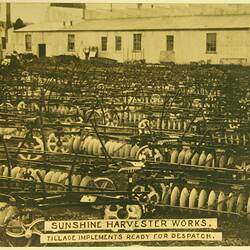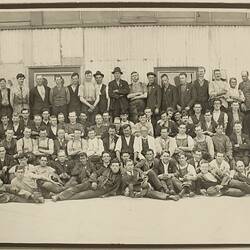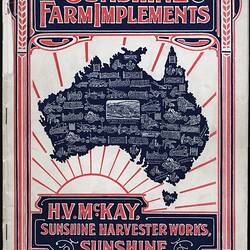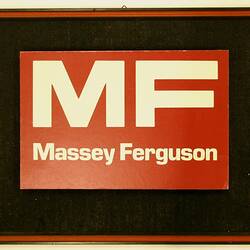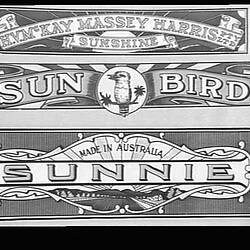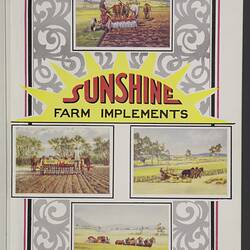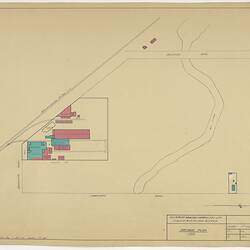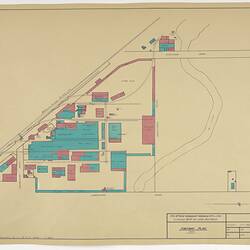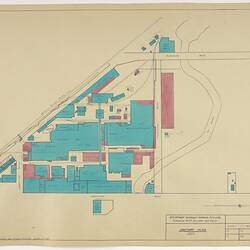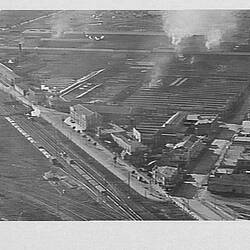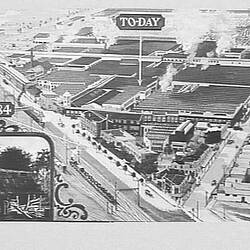Hugh Victor McKay assembled the first prototype of his famous stripper-harvester in a bush smithy on his father's farm at Drummarton, near Elmore in 1883-84. By 1888, he had moved to Ballarat, where he established his first manufacturing base in partnership with his brother John, modifying farmers' existing strippers to his patented harvester design that combined an elevator, thresher and winnower on the rear of the machine, enabling cleaned grain to be produced in a single process.
In 1890, the bussiness was floated as a public company under the title The McKay Harvesting Machinery Company Ltd, but within two years was forced into liquidation as a severe ecomonic recession caused a decline in demand for harvesters and saw many struggling farmers default on their repayments for harvesters bought from the company on credit. McKay was fortunately able to repurchase his patent rights from the company and began manufacturing from a new manufacturing works, based in Yuille Street, Ballarat. He developed and extensively trialled an improved design of the harvester, which by 1895 he was selling under the "Sunshine" brandname. The Ballarat factory was soon known as the "Sunshine Harvester Works" and output expanded rapidly from 50 harvesters built for the 1895 season, to 501 produced in 1901. New product lines such as seed & fertilizer drills, horseworks and chaffcutters were also added to the output. When a drought in 1902 led to a sudden drop in demand, McKay turned to export markets and began selling harvesters to South Africa and Argentina, in order to keep the factory in production.
In 1904, McKay purchased the Braybrook Implement Works, a defunct manufacturing plant on the western outskirts of Melbourne near the railway junction where the two main lines to Ballarat and Benidgo diverged. McKay's interest in Braybrook was stimulated by the high rail freight he was paying to bring fuel and raw materials to Ballarat and then transport completed harvesters back to the seaboard for export or shipping interstate. He was also attracted by the vast open space available for future expansion at Braybrook and by the fact that being situated in a shire, any manufacturing works there would fall outside the jurisdication of the Factories Act and associated Wages Boards.
McKay reopened the Braybrook Implement Works in 1905, resuming production of the factory's previous range of stump-jump ploughs and cultivation equipment, strippers, winnowers and farm gates, which complemented his own product lines. In 1906, McKay began relocating his entire Sunshine Harvester Works from Ballarat to Braybrook, including manufacturing equipment and many of his Ballarat workers, in a process that would take 18 months to complete. H.V. McKay aspired to create the "Birmingham of the future", and used his entrepreneurial vision and industrial skill to create the largest industrial enterprise in the southern hemisphere. By 1910, the Sunshine Harvester Works was employing 1,300 workers and had given its name to the surrounding suburb, that was renamed from Braybrook Junction to Sunshine. By the 1920s McKay's factory employed over 3,000 workers and covered 76 acres (30.7 hectares), making it the largest manufacturing plant in Australia. Techniques of mass production reduced labour costs and increased McKay's competitive edge. The plant was completely self-sufficient and manufactured every item needed, including metal tubing, nuts and bolts, and even the bikes used by plant supervisors.
Despite his beligerent approach to trade union, McKay had a parternalist attitude to his workers' welfare and invested heavily in public infrastructure and amenitities. In 1906, he had purchased an estate of 300 acres on the opposite side of the railway line to the Sunshine factory and subdivided it to provide housing for his workers. Later when the factory installed it's own electric power generating plant, electricity was supplied to domestic customers in the surrounding suburb.
References:
1. John Lack, 'McKay, Hugh Victor (1865 - 1926)', Australian Dictionary of Biography, Vol.10, Melbourne University Press, 1986, pp 291-294.
2. The Argus, 6 Feb 1905, p.6, http://nla.gov.au/nla.news-article9888735.
More Information
-
Keywords
-
Localities
-
Authors
-
Article types
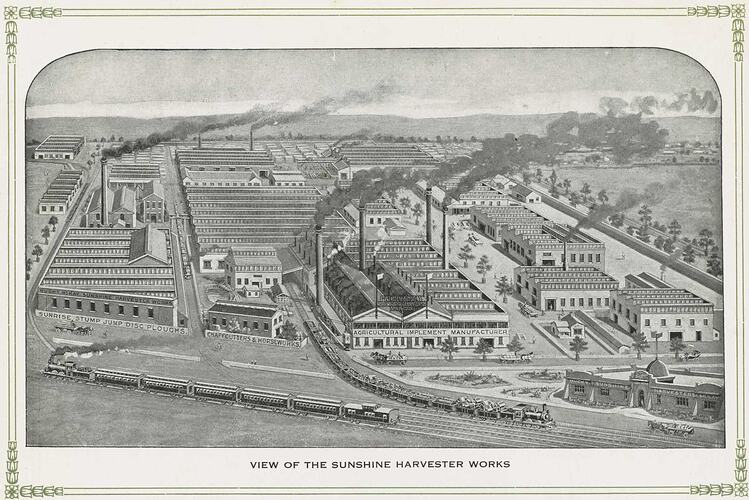
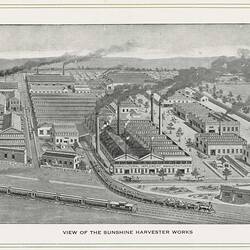
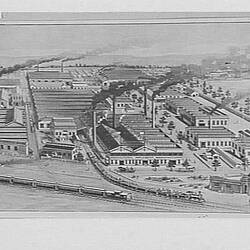
![SUNSHINE HARVESTER WORKS: [IS A PHOTO OF A DRAWING OF NO. 218 WITH INSERT IN B.R.C. OF SLAB HUT CIRCA 1880'S]](/content/media/9/9709-thumbnail.jpg)
